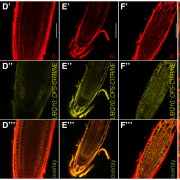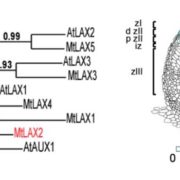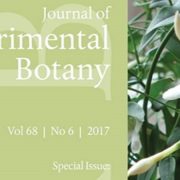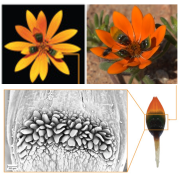Synergistic pectin degradation and guard cell pressurization underlie stomatal pore formation

??????????
This is a very interesting paper published by Rui et al. on the molecular mechanisms for stomatal pore formation, which includes pore initiation followed by pore enlargement. Each pore is surrounded by a pair of guard cells, which regulate the aperture of the pore and control gas exchange and water loss between the plant and the environment. The cellular details of the local separation between sister guard cells that give rise to the stomatal pore, or how formation of this pore is reached, are not yet fully understood. Stomatal pore initiation is an extremely dynamic process in Arabidopsis, with several morphological traits observed in a 3D time lapse imaging. The authors describe that an increase of pectic homogalacturonan (HG) modification promotes stomatal pore formation, and the inhibition of the HG de-methyl-esterification delays pore initiation and suppress pore enlargement. Moreover, there is evidence for a role of turgor pressure in stomatal pore formation. Specifically, cytokinesis could be prevented with hyperosmotic treatment in guard mother cells, and in cells treated after cytokinesis a reduction of pore enlargement was observed. As the authors conclude, “These data provide evidence that HG delivery and modification, and guard cell pressurization, make functional contributions to stomatal pore initiation and enlargement.” (Summarized by Francesca Resentini) Plant Physiol. 10.1104/pp.19.00135









